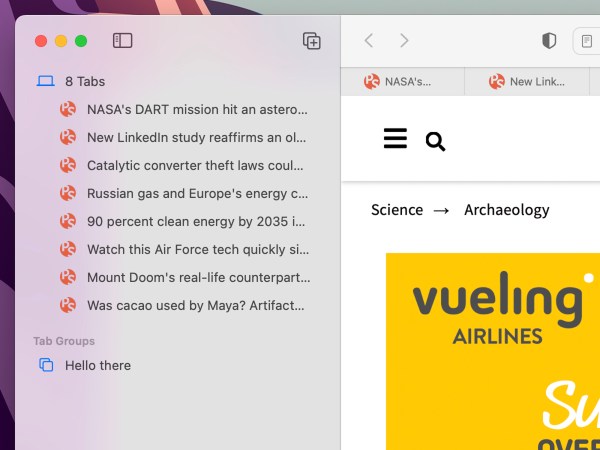

This story has been updated. It was originally published on December 9, 2019.
We spend a lot of computing time inside web browsers, which means that a couple good productivity tips could help you get back a substantial amount of time each day. We’ve got the best of the bunch below, no matter what browser you use.
Bring your bookmarks closer
If you stash your most useful and important bookmarks on your browser’s toolbar for easy access, you won’t need to wade through menus to find them. Most popular browsers have a special folder you can save bookmarks to if you want them on-screen, and you’ll usually see the option to send them there whenever you save a bookmark or manage your existing ones.
To see these links on Chrome, open the menu (three dots, top right) then choose Bookmarks and Show Bookmarks Bar. On Firefox, click the menu button (three lines, top right) and select Bookmarks, and Show bookmarks toolbar. In Edge, open the menu (three dots, top right), then click Favorites, find the More Options button (three dots) in the top right of the popup dialog box, and select Show favorites bar. Finally in Safari, choose View and Show Favorites Bar.
Save smarter bookmarks
Speaking of bookmarks, you can be clever about the URLs you save to speed up your travels around the web. If you’re a Gmail user, you’ve almost certainly bookmarked your inbox, but you can also bookmark your Gmail drafts and starred emails. If you use Slack, you can make bookmarks that’ll lead you straight to your unread threads or specific direct message conversations (the URLs for these will be personal to you).
[Related: How to save all the new posts you find on social media]
You can also create a new blank Google Doc by following the docs.new web address. Bookmark this link for a quick and easy way to create new documents in the future (try sheets.new and slides.new, too).
Bookmark searches as well—whether on Twitter, Wikipedia, or somewhere else—so you don’t have to keep typing out your search terms every time.

Use your keyboard
Don’t neglect your keyboard while using the web—the Home button whizzes you back up to the top of the page, while End drops you to the bottom, for example. Page Up and Page Down can be used for scrolling, while Ctrl+W (or Cmd+W on a Mac) closes the current tab, and Ctrl+T (or Cmd+T on a Mac) opens up a new one. For a comprehensive guide to browser keyboard shortcuts, check out our detailed guide right here.
Reduce page loads
Modern-day web pages come packed with scripts, code, and interactive elements that can seriously slow down both loading times and how quickly you can get around sites. The good news is that numerous third-party extensions are available to limit how much your browser has to deal with at once.
Our favorites include Ghostery (for Chrome, Firefox, Edge, and Safari), NoScript (Firefox), and Privacy Badger (Chrome, Firefox, and Edge). All these add-ons let you whitelist ads on sites you want to support.

Ditch inactive tabs
Modern-day web browsers treat tabs almost like separate applications, to make sure they run more smoothly and don’t bring the whole browser down if they crash. The downside to this approach is that too many tabs can really start to suck up system resources and slow your web browsing to a crawl.
Browser extensions can help you out here: OneTab is an excellent tab manager for Chrome and Firefox that lets you save tabs for later viewing. The Great Suspender for Chrome, meanwhile, will suspend inactive tabs until you need them, freeing up memory and CPU time. Auto Tab Discard does a similar job for Firefox). Cluster for Chrome and Tab Manager Plus for Firefox are also worth a look for saving tabs for later, meaning you won’t have to keep dozens open at once.
Start off right
Your browser of choice will have numerous options for when it starts up and what it displays on newly opened tabs, so make sure you’re using the ones that will keep you the most productive. Don’t keep a home page that you immediately click away from, for example.
In Chrome, choose Settings from the menu, then look under On startup to configure what appears when you launch the browser: You can choose the standard New Tab page, carry on with the pages you had open when Chrome was last closed, or select a specific page or set of pages.
You can find similar options in Firefox (pick Settings from the menu, then find the Startup heading), and in Edge (choose Settings from the menu, click Start, home and new tabs, and find the When Edge starts heading). In Safari, you’re limited to a single page: Open Safari, Preferences, then General to set it.
Plenty of third-party plug-ins work with Chrome and Firefox to give you something a little different from the new tab page: Tabliss loads up a to-do list and your favorite bookmarks, for example, while Speed Dial 2 for Chrome and Infinity New Tab for Firefox put the bookmarks you need right at your fingertips.














